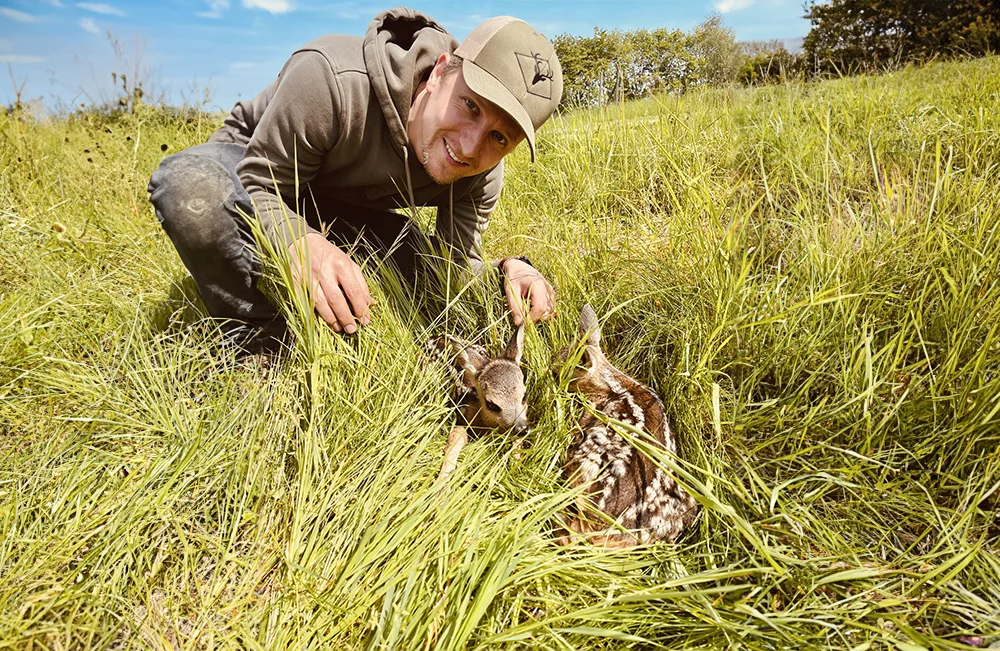Fawn Rescue with Thermal Drones: A Matter of the Heart

High-Tech Rescue in the Grass
Saving Fawns from Mowing Death with Thermal Drones
Fawn rescue using thermal drones is a captivating and heartwarming endeavor. With the help of modern technology, fawns can be located and saved from the dangers of combine harvesters. The rescuers are often sustainability-conscious hunters or work closely with hunters and farmers to secure the fawns and later release them back into their natural environment. The rescue requires dedication, willingness to sacrifice, and passion, as the process typically begins early in the morning and demands significant time and commitment. It is a matter of the heart that goes far beyond hunting and protects fawns, thereby promoting ethical hunting practices in the area.
It's 4:15 AM, and the alarm clock rings. It's time to get up, get ready, and leave the house immediately. Before the sun even illuminates the horizon and warms the ground! On such days, GECO ammunition stays safely at home and is replaced with a thermal drone. This scenario describes many days of hunting life from mid-May, when the fawn rescue season begins. This is the time of the first mowing, and farmers start to cut their fields. But in the tall grass, helpless fawns are often hidden, threatened by mowing machines.
Once outside, the drone pilot and their companions set out on this special mission. What remains invisible to the naked eye is detected by the modern technology of the thermal drone. A drone like the DJI M3T is equipped with a special thermal imaging camera that captures the body heat of fawns. On the pilot's screen, the animals appear as bright, red dots. This allows them to be localized and rescued from the impending danger of mowing machines. Generally, speed is crucial in this entire operation, as the ground continues to warm up as time progresses, creating more heat points that could be mistaken for fawns.
Once a fawn is discovered, they quickly move to its resting place. Quickly putting on disposable gloves to prevent leaving a personal scent, the fawn is carried to the edge of the meadow. There, it is temporarily secured in baskets. When mowing is complete, the fawns are released so they can return to their mothers – the does. This entire undertaking requires close cooperation between hunters and farmers to coordinate the rescue mission and release the fawns back to freedom as quickly as possible after extensive work.
For those who dedicate themselves to this mission, fawn rescue is truly a matter of the heart. The search is often conducted by hunters or associations. Significant time, energy, and money are invested in the rescue. For the fawn rescuers, it is a passion that drives them, and their motivation extends far beyond hunting. Fawn rescue requires dedication and willingness to sacrifice. It means getting up early, reducing overtime hours, and forgoing vacation planning. The partners of the rescuers must also support this important task and show understanding for their commitment.
"Fawn rescue with a thermal drone shows what kind of hunter you want to be. The operation takes a toll on body and mind each year, as most hunters must balance their professional lives with their hunting responsibilities. All rescuers will agree in the end: The hardships disappear every time you save another small, freshly born fawn from a mowing death." -@jaga_chioo


